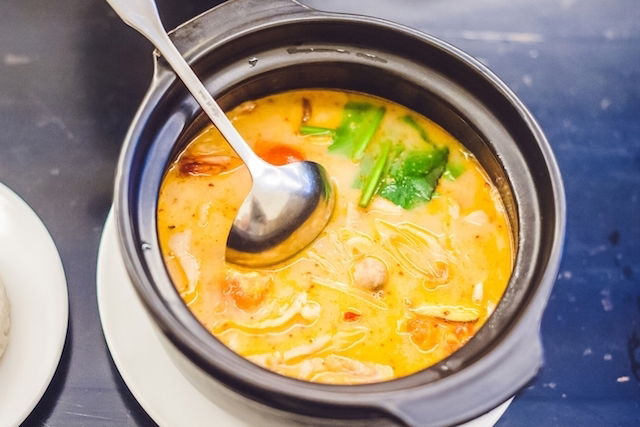A diverticulitis diet should should initially only consist of clear, easily digestible fluids, such as chicken broth, fruit juices, coconut water and gelatin. This type of food helps to soothe the intestine, and keep it at rest by reducing the formation of feces.
Diverticulitis is characterized by an inflammation or infection in the diverticula. These are small, abnormal pouches that formed along the wall of the intestine and they can cause symptoms such as abdominal pain, nausea, vomiting and constipation. Therefore, the foods you eat when you have diverticulitis should generally be easy to digest and low in fiber.
Also recommended: Diverticulitis: Symptoms, Causes, Treatment & Complications tuasaude.com/en/diverticulitisAs the diverticulitis flare-ups improve, the diet should also progress from a liquid to a pureed diet, and when it is well-tolerated, this can progress to solid foods. From then on, it is important to reintroduce high-fiber foods and drink plenty of water water to prevent new flare-ups

Food to eat
When experiencing a diverticulitis flare-up, your diet should consist of low fiber food that is easy to digest. Some examples include freshly-squeezed fruit juice, chicken broth, water and soothing teas, such as chamomile or linden tea. You should keep a liquid-based diet should be followed for the first 24 hours.
As symptoms improve, you can incorporate some pureed fruits, like vegetable soups (pumpkin, celery, and yam), boiled vegetables (zucchini or aubergine), and shredded chicken. In addition, you can also eat rice porridge, natural yogurt and sugar-free Jello. In general, this diet should be maintained for another 24 hours.
Once the pain resolves and the bowel functioning starts returning to normal, you can progress your diet to incorporate more solids. Solids should remain plain, however. Some examples include boiled rice, mashed potatoes, pasta, white bread, and plain biscuits. Eggs, fish, and dairy can also be slowly added.
Food to avoid
When treating a diverticulitis flare-up, you should avoid consuming foods that may cause more inflammation. Specific foods to avoid include:
- Sugar and sweets, such as like candy, ice cream and cakes;
- Fiber, such as raw vegetables, fruit skins, seeds and whole grains;
- Red meat and processed meats, such as beef and pork, hamburgers and sausages;
- Foods that cause gas, such as vegetables, milk, eggs, nuts, onions, potatoes, asparagus, cheese, broccoli and cabbage;
- Certain beverages, such as soft drinks and alcoholic beverages;
- Processed foods and fried foods, such as ready-to-eat or frozen meals, concentrated soup broth, pizza, snacks, French fries and sauces.
Furthermore, it is important to rest, drink fluids and follow the doctor's instructions, who may recommend the use of painkillers and antibiotics. Understand how diverticulitis is treated.
Diet after flare-up
After a diverticulitis flare-up it's important to gradually include fiber-rich foods into your day-to-day diet. Start by having one fruit or raw vegetable a day, and then progress by adding more fruits and vegetables, or even some wholegrain cereals into your day. In addition, you will also need to increase your daily water intake to at least 2 liters a day.
Including fibers and drinking plenty of water is very important to avoid constipation and make feces softer. When feces are not soft and get compacted inside the bowels it can cause the diverticula to get inflamed or infected, leading to other flare-up.
Furthermore, it is important to consume probiotics, which are foods that naturally contain microorganisms that are beneficial for gut health. They are especially beneficial for people with diverticulitis, as they improve the immune system functioning, prevent intestinal inflammation and infection caused by pathogenic bacteria, and prevent future flare-ups.
Also recommended: 10 Probiotic Foods: Benefits & How to Consume Them tuasaude.com/en/probiotic-foodsMeal plan
The following table demonstrates an example of a four-day diet plan that is suitable for a diverticulitis flare-up:
Quantities included in this diet plan may vary according to age, gender, physical activity or current health status. Therefore you are advised to be assessed by a doctor or registered dietitian for a more customized plan that addresses all you nutritional needs.
